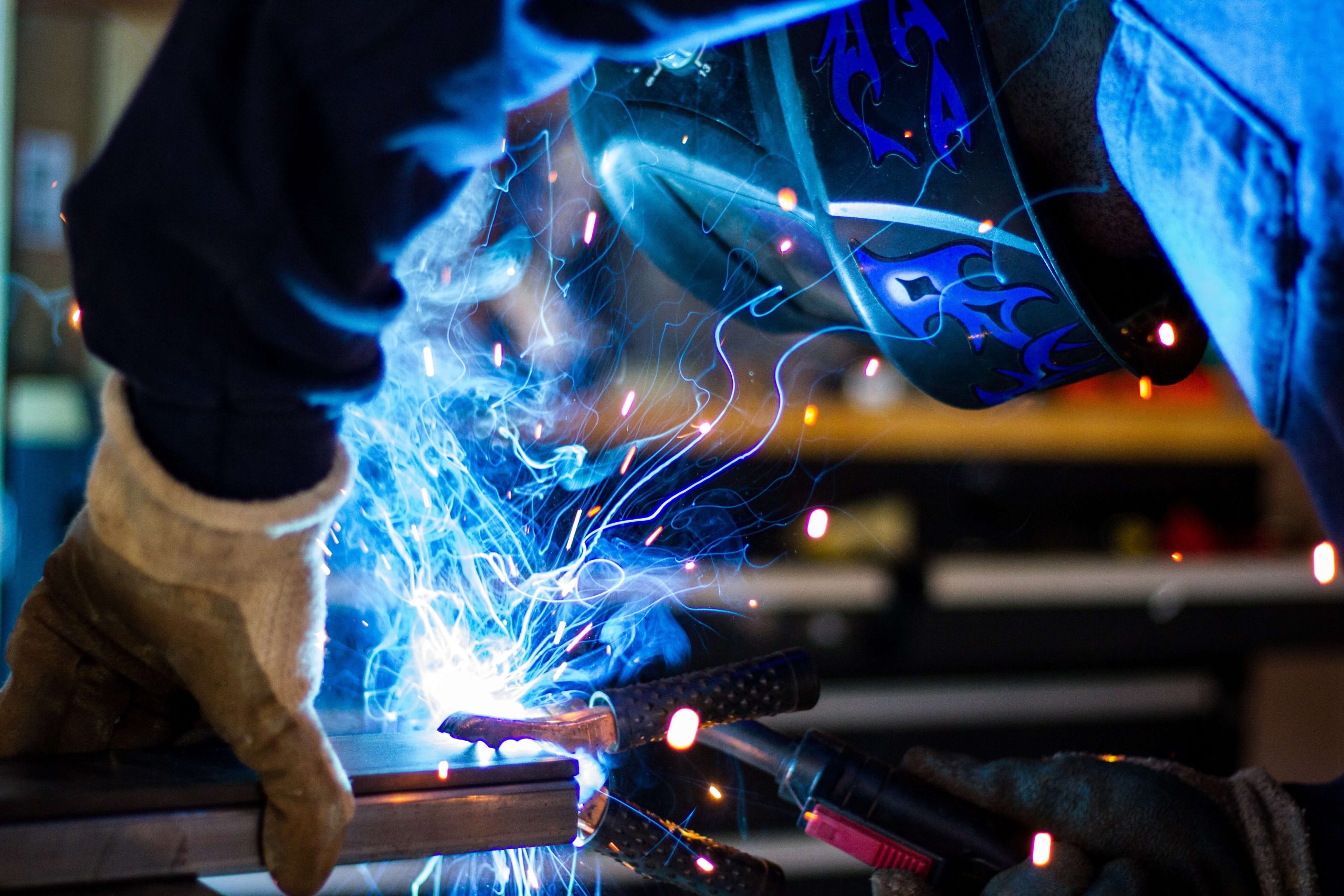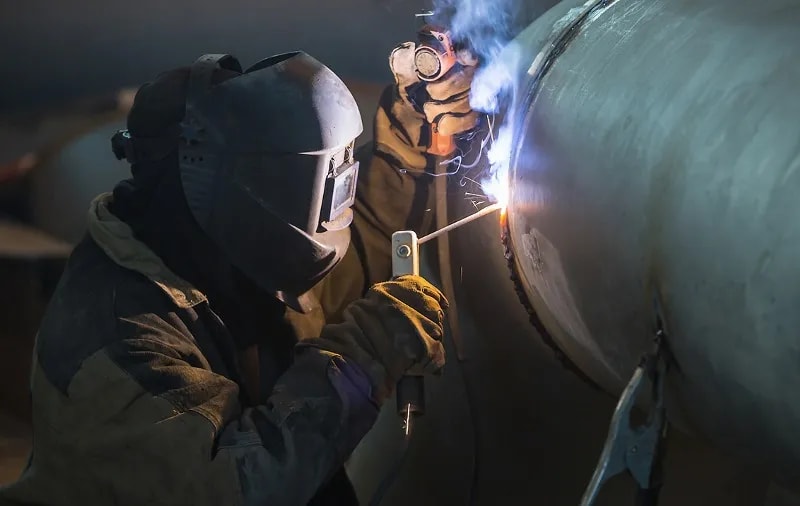Overlooked causes of weld misalignment and Belgrade Fabrication’s methods
Usual Welding Fixing Issues and Just How to Address Them Effectively
Welding repairs usually come across a range of concerns that can threaten the stability of the final product. Usual issues include inadequate infiltration, porosity, and imbalance, among others. Each flaw provides unique obstacles that need specific approaches for resolution. Comprehending these issues is necessary for welders aiming to improve their skills and end results. This conversation will certainly discover these usual welding repair problems and effective techniques to address them.
Inadequate Penetration
Insufficient penetration happens when the weld steel falls short to fully fuse with the base material, resulting in weak joints and potential structural failings. This concern typically comes from insufficient warmth input, incorrect electrode angle, or improper welding rate. Welders may run into insufficient infiltration because of a mistake of the necessary criteria for a particular material thickness or type. Furthermore, contamination on the base product's surface area can hinder effective bonding, intensifying the problem. To deal with inadequate infiltration, welders need to ensure appropriate setups on their devices and keep a tidy job surface area. Normal examination of welds is suggested to determine any type of shortages early, permitting for prompt modifications and the avoidance of jeopardized architectural stability in bonded settings up.
Porosity
Porosity is an usual flaw in welded joints that materializes as tiny gas bubbles trapped within the weld metal. This issue can jeopardize the stability of the weld, resulting in reduced stamina and prospective failure under anxiety. Belgrade Welding. Porosity typically develops from contamination, dampness, or inappropriate welding methods, which permit gases to get away right into the molten weld pool. To deal with porosity, welders ought to guarantee appropriate surface prep work, maintain a clean workplace, and use ideal welding criteria. Additionally, selecting the appropriate filler product and shielding gas can minimize gas entrapment. Normal assessment and screening of welds can aid identify porosity early, guaranteeing prompt restorative actions are taken, consequently protecting the high quality and dependability of the bonded framework
Imbalance
Misalignment in welding can occur from different factors, including improper setup and thermal expansion. Understanding the source is crucial for efficient resolution. Several correction strategies are readily available to straighten parts and guarantee architectural stability.
Reasons for Misalignment
Welding imbalance often originates from a variety of underlying problems that can jeopardize structural honesty. One primary cause is inappropriate fit-up of elements prior to welding, which can result in voids and uneven surfaces. Variants in thermal expansion throughout the welding procedure can additionally lead to distortion, particularly if the products being signed up with have different coefficients of development. In addition, inadequate clamping and fixturing may fail to hold components firmly in position, bring about motion during welding. Inadequately maintained equipment, including welding makers and devices, might present incongruities in the weld grain, more contributing to misalignment. Driver error, stemming from not enough training or experience, can also play a considerable role in creating misaligned welds.

Adjustment Methods Readily Available
Addressing misalignment efficiently needs a mix of corrective methods customized to the details problems available. One typical method is using components or jigs to hold elements in the right placement during welding, ensuring regular alignment. Additionally, preheating the products can help reduce distortion and boost fit-up. For substantial imbalance, mechanical adjustment methods, such as utilizing hydraulic jacks or clamps, can be utilized to deal with the position prior to welding. Post-weld warm therapy might also be needed to ease stress and anxieties brought on by imbalance. Ultimately, mindful evaluation and modification during the configuration phase can avoid misalignment concerns from ending up being considerable problems, advertising a smoother welding process and improving overall architectural stability.
Distortion
Distortion is a common obstacle in welding that can emerge from different aspects, consisting of irregular heating and cooling. Comprehending the reasons for distortion is vital for carrying out efficient avoidance methods. Resolving this issue not just enhances architectural honesty however likewise boosts the overall quality of the weld.
Root causes of Distortion
When based on the intense heat of welding, materials typically undergo modifications that can result in distortion. This phenomenon primarily emerges from thermal growth and tightening during the welding procedure. As the weld location heats up, the product broadens; upon cooling, it acquires, which can create inner stresses. In addition, unequal heating throughout a work surface can aggravate these stress and anxieties, leading to warping or flexing. The kind of material likewise plays a considerable duty; steels with varying thermal conductivity and coefficients of growth may react in a different way, bring about unforeseeable distortions. Inadequate joint style and poor fixturing can contribute to imbalance during welding, increasing the likelihood of distortion. Comprehending these reasons is crucial for effective welding fixing and avoidance strategies.
Prevention Techniques
Efficient prevention strategies for distortion during welding concentrate on controlling warmth input and ensuring correct joint design. Keeping a regular warm input assists to decrease thermal growth and contraction, which can bring about distortion. Making use of strategies such as preheating the workpiece can additionally minimize the temperature gradient, advertising uniform heating. In addition, picking suitable joint styles, such as T-joints or lap joints, can boost stability and decrease stress and anxiety focus. Executing correct fixturing to secure the workpieces in position even more help in keeping placement throughout the welding procedure. Ultimately, staggered welding sequences can distribute warm a lot more equally, preventing local distortion. By applying these strategies, welders can considerably reduce the possibility of distortion and improve the general quality of their welds.
Splitting
Cracking is a typical concern run into in welding repair services, usually arising from different factors such as improper air conditioning prices, material choice, or inadequate joint prep work. The event of splits can greatly endanger the honesty of the weld, resulting in possible failings throughout operation. To address this problem, welders should first analyze the source, guaranteeing that materials work and appropriately selected for the details application. Additionally, managing the air conditioning price during the welding procedure is necessary; rapid air conditioning can induce tension and bring about breaking. Appropriate joint layout and prep work likewise add to lessening the threat. Carrying out these strategies can boost weld quality and toughness, inevitably minimizing the possibility of fracturing in ended up weldments.

Incomplete Fusion
A substantial problem in welding repair services is incomplete combination, which occurs when the weld metal does not adequately bond with the base product or previous weld passes - Montana Mobile Welding and Repair Belgrade. This issue can cause weaknesses in the joint, potentially jeopardizing the honesty of the welded structure. Aspects adding to insufficient combination consist of not enough heat input, inappropriate welding technique, and contamination of the surface areas being joined. To resolve this concern efficiently, welders ought to guarantee appropriate pre-weld cleansing and surface preparation, in addition to readjust their welding criteria to achieve adequate infiltration and combination. Normal evaluation during the welding process can likewise help identify insufficient combination early, permitting for prompt restorative steps to improve the general high quality of the weld
Overheating
While welding repair work can boost structural integrity, overheating provides a significant challenge that can cause material deterioration. Extreme warm during welding can alter the mechanical residential or commercial properties of steels, resulting in minimized stamina, enhanced brittleness, and bending. This phenomenon is particularly critical in high-stress applications where structural dependability is extremely important. Determining overheating can entail aesthetic evaluations for discoloration or distortion, as well as checking temperature throughout the welding process. To alleviate the dangers connected with getting too hot, welders should use proper techniques, such as managing warmth input, changing travel speed, and using suitable filler products. Furthermore, applying pre- and post-weld warm treatments can assist bring back material residential properties and enhance the general quality of the repair work, ensuring long-term efficiency and safety.
Frequently Asked Concerns
What Are the Common Indications of a Welding Issue?

Just How Can I Evaluate My Welds for Top quality?
To evaluate welds for quality, one can use aesthetic evaluations, ultrasonic testing, and radiographic techniques. Each strategy assures architectural honesty, determines flaws, and confirms adherence to specified standards, ultimately boosting the integrity of the bonded joints.
What Safety and security Preventative Measures Should I Take While Welding?
When welding, one need to focus on safety and security by using proper individual protective devices, making certain proper air flow, protecting flammable materials away, keeping a clean work area, and knowing surroundings to stop mishaps and injuries.
Can I Fix a Weld Without Renovating the Entire Joint?
Fixing a weld without redesigning the whole joint is feasible, depending upon the damages (Montana Mobile Welding and Repair Welding). Strategies such as grinding, adding filler product, or utilizing a welding process can properly attend to details problems while maintaining the bordering framework
What Devices Are Vital for Effective Welding Services?
Important devices for efficient welding repair services include a welding equipment, cord brush, grinder, protective gear, clamps, and filler products. Each device plays an essential role in guaranteeing high quality and safety during the repair work procedure. Porosity normally arises from contamination, wetness, or improper welding strategies, which enable gases to run away into the molten weld swimming pool. Inadequately maintained devices, consisting of welding machines and tools, might introduce disparities in the weld grain, further contributing to imbalance. When subjected to the extreme warmth of welding, products commonly undergo get more info changes that can lead to distortion. Cracking is an usual concern run into in welding fixings, frequently resulting from various variables such as improper cooling rates, product option, or poor joint preparation. A substantial concern in welding fixings is incomplete fusion, which occurs when the weld metal does not properly bond with the base material or previous weld passes.